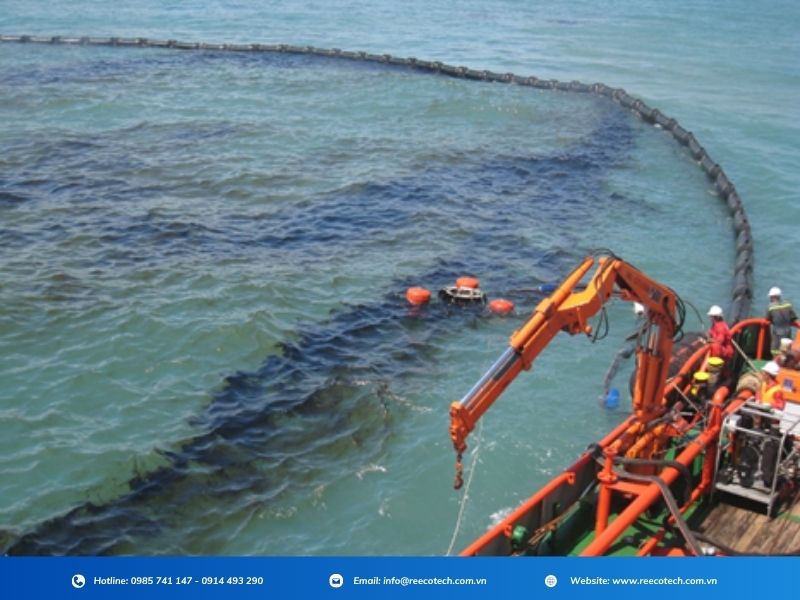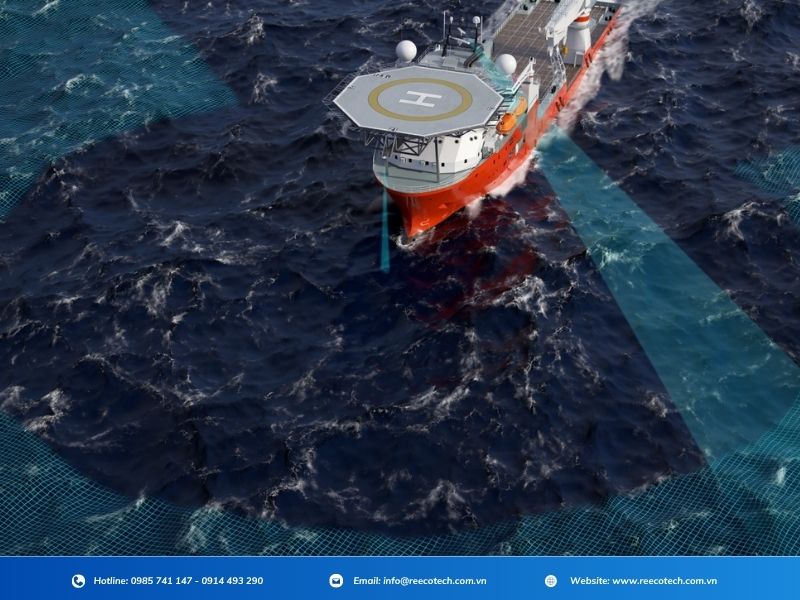Across the vast ocean—where energy transportation routes, offshore oil and gas platforms, and maritime operations take place continuously—even a minor oil spill can lead to significant environmental, economic, and reputational consequences. Oil pollution not only threatens marine ecosystems but also directly impacts fishermen’s livelihoods, coastal tourism, and the credibility of enterprises involved in the energy supply chain.
With over 3,200 kilometers of coastline and a dense network of offshore oil and gas exploration projects, Vietnam faces increasing risks of marine environmental incidents. Accordingly, there is a pressing need for the development of an effective, modern, and responsive oil spill monitoring solution to ensure sustainable marine economic development and compliance with increasingly stringent environmental regulations.
Current Status and Legal Framework in Vietnam: Oil Spills – A Critical Environmental Threat
Vietnam has experienced numerous oil spill incidents in recent years, ranging from grounded oil tankers and pipeline leaks to accidents during fuel loading operations. Notable incidents in Vung Tau, Can Gio, Quang Ngai, and Nghi Son have demonstrated a concerning pattern: most spills are detected only after the oil has spread over a large area, resulting in serious environmental damage and delayed mitigation responses.
Primary causes include:
- Absence of automated early warning and real-time monitoring systems
- Reliance on manual inspection methods, lacking integration and consistency
- Insufficiently transparent and incomplete environmental data to support timely investigation and decision-making
These limitations represent critical gaps in marine environmental management and pose challenges for enterprises striving to comply with tightening legal requirements.
To enhance corporate accountability in marine environmental protection, the Vietnamese government has issued several key legal documents, including:
- Law on Environmental Protection 2020 (Article 29, Clause 3): Requires high-risk projects to install automatic environmental monitoring systems and develop contingency plans for environmental incidents.
- Decree No. 45/2022/ND-CP (Article 10): Specifies administrative penalties for failure to operate monitoring systems or for delayed and inadequate responses to oil spill incidents.
- QCVN 07:2009/BTNMT: National technical regulation on oil spill prevention and response applicable to oil and gas exploration, extraction, and transportation facilities.
- Circular No. 42/2013/TT-BTNMT: Provides guidance on periodic environmental monitoring and reporting for facilities with high pollution potential.
To effectively fulfill these legal obligations, enterprises require an advanced monitoring system that not only collects environmental data but also supports real-time analysis, predictive modeling, and coordinated response.
Reecotech’s Integrated Oil Spill Detection Solution: Automated – Intelligent – Continuous
Reecotech has developed an integrated oil spill detection system that combines advanced sensor networks and a cloud-based software platform to provide accurate, continuous, and actionable data. The system includes the following core components:
1. Early Detection via X-Band Radar and Sea Surface Imaging Algorithms
The dedicated X-band radar is capable of detecting surface oil slicks by identifying anomalies in microwave backscatter on the sea surface. Embedded signal processing algorithms allow for:
- Differentiation between oil slicks, wave patterns, and floating debris
- Reliable operation under all weather and lighting conditions (day/night, rough sea states)
- Automated anomaly detection and early warning alerts to enable timely response
2.Visual Verification Using Electro-Optical and Infrared (EO/IR) Cameras
Upon radar detection of potential oil spills, the system automatically activates EO/IR cameras to capture images of the suspected area, enabling:
- Daytime visual confirmation using high-resolution optical cameras
- Nighttime and low-visibility monitoring using thermal infrared imaging
- Real-time image transmission to monitoring centers for incident verification and decision support
3. Environmental Sensing via Instrumented Monitoring Buoys
Deployed buoys are equipped with multi-parameter sensors capable of measuring hydrocarbon concentrations, viscosity, turbidity, and other critical indicators. These enable:
- Real-time assessment of water quality in high-risk zones
- Early detection of abnormal environmental variations
- Enhanced reliability of response decisions based on quantified environmental data
4. Centralized Data Management via VnEmisoft Platform
The VnEmisoft software suite, developed by Reecotech, provides:
- Encrypted data storage and real-time data analytics with high system availability
- Role-based access for stakeholders including operators, site managers, and regulatory authorities
- Integration of SMS/email alerting, automated reporting, and fast data retrieval to support timely incident response
5. AI-Powered Image and Trend Analysis for Spill Prediction
Reecotech leverages artificial intelligence (AI) and computational models to enhance system performance and predictive capability, including:
- Classification of true oil slicks versus false positives from radar and EO/IR imagery
- Simulation of spill dispersion dynamics based on real-time current, wind, and tidal data
- Scenario-based response recommendations optimized for specific locations (e.g., nearshore, coral reef zones, offshore platforms)
Applications in Vietnam: From Port Terminals to Offshore Installations
Reecotech’s oil spill monitoring system is adaptable to various critical infrastructure types, including:
- Petroleum transport terminals, where leakage risks are high during transfer operations
- Refineries and fuel storage depots, which are subject to strict monitoring under QCVN requirements
- Offshore drilling rigs, where integrated radar–sensor–satellite systems enable remote monitoring
- Coastal ecological buffer zones, where early warning systems and transparent data logging are essential for multi-agency oversight
The solution enables relevant authorities and corporate stakeholders to:
- Detect small-scale incidents at an early stage, before escalation
- Reduce response time from several hours to under 10 minutes
- Integrate environmental monitoring data into corporate Environmental Management Systems (EMS)
Reecotech’s integrated oil spill detection system is not just a modern technological platform—it is a strategic commitment to marine environmental protection, legal compliance, and sustainable development in Vietnam’s oil and gas, maritime transport, and coastal industries.
By combining radar sensing, multi-parameter environmental monitoring, artificial intelligence, and secure cloud data architecture, Reecotech delivers a comprehensive solution for early detection, precise verification, timely response, and transparent reporting.




